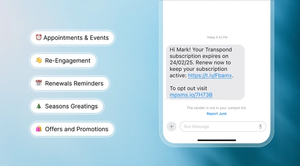A whopping 87% of brands believe that email marketing is indispensable for their success.
That’s a clear signal: if you aren't already focusing on your email marketing KPIs, it's time to start.
From open rates to conversion rates, each KPI offers insights into your campaign's performance. They also play a fundamental role in increasing your ROI and maintaining a healthy subscriber list.
Ready to up your email marketing game? Let's check the 10 key performance indicators you need to start tracking.
Why you need to track email marketing KPIs
Email marketing continues to be one of the most effective digital marketing strategies. The average ROI of email marketing is $36 for every $1 spent. However, to ensure that the ROI is being met,
Tracking email marketing key performance indicators (KPIs) becomes essential for maximizing your campaign's success.
It helps you:
- Assess campaign success: KPIs like open rates, click-through rates, and conversion rates show how well your emails meet their goals.
- Steer your strategy: Insights from KPIs help you decide which content works best. This lets you focus on what drives engagement and conversions.
- Improve personalization: Awareness of what your audience prefers and how they behave allows you to tailor your marketing emails more effectively.
- Increase ROI: Analyzing KPIs helps optimize how you spend your budget.
- Keep your list healthy: Metrics such as bounce rate and unsubscribe rate indicate the health of your email list. This makes for better deliverability and campaign success.
- Plan for the future: KPIs help predict trends and plan better campaigns based on historical data.
That said, here’s a look at the 10 most important email marketing KPIs to track.
10 email marketing metrics
Email marketing comes in many different shapes and sizes. One thing remains consistent, however – metrics.
1. Conversion rate
Conversion rate measures the percentage of email recipients who complete a desired action. This could mean making a purchase, signing up for a webinar, or downloading a resource.
Why track it?
Conversion rates allow you to discern how effective your emails are in motivating subscribers to take action. A strong conversion rate means your content resonates well with your audience.
Conversion rate is a reliable metric when interpreted correctly. It provides clear insight into how well your email content converts intent into action. However, it should not stand alone. Pair it with other metrics like open rates and click-through rates for a comprehensive view.
This metric is highly valuable because it directly ties to revenue or desired outcomes. A high conversion rate indicates your strategy aligns well with subscriber needs and preferences.
How to calculate it
You can calculate the conversion rate by dividing the number of people who completed the desired action by the total number of emails delivered. Then, multiply the result by 100 to get a percentage.
Here's the formula:
Conversion Rate = Number of conversions / Total number of visitors
What to do when it's low
If you find your conversion rate is lacking, take these steps:
- Refine your call to action: Make it clear and compelling. It should be easy to find and understand.
- Segment your list: Send targeted emails based on subscriber data. This increases relevance and potential engagement.
- Create engaging emails: Your emails need to be engaging, or better yet, entertaining. Use attractive visuals and concise language.
2. Click-through rate
Click-through rate (CTR) shows the percentage of people who click a link in your email. It measures how much your audience engages with your content.
Why track it
You should track CTR to see if your emails grab attention. A high CTR means your messages hit the mark. It tells you people find your emails worth exploring more. This metric can also be used to tweak your campaigns as they go.
CTR is a straightforward, reliable indicator of email effectiveness. It pinpoints which messages work and which don’t. This makes it easier to balance your approach and improve results. CTR also lets you test new ideas quickly. You can see what changes make a difference.
Keep an eye on your CTR. Use what you learn to make each email better than the last. This will keep your audience engaged and active.
How to calculate it
To calculate CTR, divide the number of clicks by the number of delivered emails. Then, multiply the result by 100 to get a percentage.
Here's the formula:
CTR (%) = Number of clicks / Total emails deivered X 100
What to do when it's low
CTR can range from 1-5%. However, a good benchmark is about 2.5%. If your CTR is lower than expected, consider these steps to improve:
- Revise your subject lines: Make them clear and enticing. A/B test different phrases to see what captures attention best.
- Enhance email design: Use a clean layout with easy-to-find links. Make sure your call to action stands out.
- Personalize your content: Tailor emails to fit the interests and needs of your audience. Personalized messages often lead to more clicks.
Both CTR and conversion rate are directly tied to your results. This brings us to another metric, arguably the most important one – ROI.
3. ROI
ROI, or Return on Investment, measures the profitability of an investment. In email marketing, it calculates how much money you earn compared to what you spend on your campaigns.
Why track it?
Tracking ROI is super important because it shows the financial effectiveness of your email marketing strategy. It helps you see if the money you're investing in email campaigns is paying off. This metric guides decisions on budget allocation and strategy adjustments.
ROI is often used to justify your marketing spend by showing the direct financial returns. It's valuable because it quantifies the success of your campaigns in clear monetary terms. ROI is generally reliable as it directly reflects earnings against expenditure, but its accuracy depends on correct attribution of sales to specific emails.
How to calculate it
Calculate ROI with this formula:
ROI (%) = Revenue from email campaign - Cost of email campaign / cost of email campaign X 100
Revenue per email helps understand the direct earnings from each sent email. Here’s how to calculate it:
Revenue per email = Total campaign revenue / Total emails sent
What to do when it's low
If your ROI is less than anticipated, consider these steps to revamp:
- Review and adjust your spending: Sometimes, the costs can outweigh the benefits, especially if you're investing heavily in areas that don't yield high returns. Analyze your budget to see where you can cut costs without sacrificing quality.
- Test different offer types: Experiment with various promotions like discounts, bundles, or exclusive content to see which ones drive more revenue. Different incentives might appeal more effectively to your audience and uplift conversions.
- Leverage automation for efficiency: Automate parts of your email campaign to save time and reduce labour costs. Use automation like Transpond for basic email responses, follow-ups on abandoned carts, and nurturing leads. This can increase conversions without additional active management.
To achieve positive ROI, your emails need to be delivered. Tracking email deliverability can confirm this.
4. Email deliverability
Email deliverability measures whether your emails reach the subscriber's inbox or get lost, like ending up in spam. It checks the journey of your emails from sent to received.
Why track it?
You need to track deliverability to make sure your emails actually reach people. Good deliverability means more people see your messages. This affects everything from reader engagement to sales. Without tracking, you might not know if your emails are getting blocked or ignored.
Tracking deliverability allows you to spot problems early. Maybe your emails look like spam, or you're sending too many at once. Fixing these issues means more emails reach their target. This increases your campaign's effectiveness.
Deliverability is a key metric for any email campaign. It's well-grounded because it shows exactly where your emails end up. You can trust it to guide improvements in your email strategy.
How to calculate it
To calculate deliverability, you divide the number of emails delivered by the number of emails sent. Then, multiply by 100 to get a percentage. Here's the formula: Deliverability rate (%) = Emails delivered / Emails sent X 100
What to do when it's low
According to EmailToolTester, the average deliverability is 83.1% across 15 different email service providers. If your deliverability is lower, here's what to do:
- Authenticate your emails: Set up protocols like SPF, DKIM, and DMARC. These confirm your emails come from a trusted source, which can increase deliverability.
- Modify your sending frequency: Sending too many emails can lead to spam flags. Find a balance that keeps subscribers engaged without overwhelming them.
- Engage inactive subscribers differently: Identify subscribers who haven’t interacted with your emails recently. Try re-engagement campaigns or remove them if they remain inactive.
Improving email deliverability directly impacts your campaign’s open rates. When your emails consistently reach the inbox, you increase the likelihood that they will be opened. Good deliverability practices help avoid spam complaints. Once you have strong deliverability, your focus can shift to optimizing open rates.

5. Open rate
The open rate is a metric that shows the percentage of email recipients who open an email. It measures the initial engagement of your email campaign.
Why track it?
Tracking the open rate is essential. Why? Because it indicates how well your emails grab attention. A high open rate suggests your subject lines are effective and your audience is engaged. Monitoring this metric reveals the appeal of your email content at a glance.
This metric is appreciated for testing different strategies and optimizing for better engagement.
The open rate is valuable as a basic indicator of engagement, but it has limitations. It depends on whether the email client loads images, as opens are often tracked with a tiny, hidden image. Therefore, while useful, it's not always completely reliable on its own.
How to calculate it
Calculate the open rate with this formula: Open rate (%) = Number of opens / Total emails delivered X 100
What to do when it's low
Campaign Monitor found out that the average open rate hovers around 20%. If your open rate is lower than desired, you can take these steps to refine your approach:
- Purge your email list: Remove inactive subscribers who haven’t opened your emails for an extended period. This helps focus on an engaged audience and could boost your metrics.
- Improve email previews: Use preheader text effectively. This is the short summary text that follows the subject line when viewing an email in the recipient's inbox. Make it compelling and complementary to your subject line.
- Conduct A/B testing on sender name: Sometimes, changing the sender name from a company name to a personal name can increase open rates. Test different sender names to see which generates more opens among your subscribers.
A higher open rate indicates that your emails are engaging and well-received. This suggests effective subject lines and relevant content for your audience. However, to truly optimize open rates, you must also consider the bounce rate.
6. Bounce rate
Bounce rate in email marketing refers to the percentage of emails that were not successfully delivered to recipients' inboxes. It measures the health of your email list and the effectiveness of your email delivery practices.
Why track it?
You need to track the bounce rate because it indicates potential issues with your email list or email delivery settings. A high bounce rate may signal problems such as outdated or incorrect email addresses, or issues with your email server being flagged as spam.
Keeping an eye on your bounce rate contributes to a clean email list and helps your communications actually reach the recipients. It's useful because it directly affects your campaign's effectiveness AND your sender reputation. Bounce rate is a reliable metric because it provides clear, actionable data on delivery failures.
How to calculate it
Calculate the bounce rate with this formula:
Bounce rate (%) = Number of bounced emails / Total emails sent X 100
What to do when it's high
A widely accepted benchmark for bounce rate is 2%. If yours is higher than that, consider taking these steps:
- Verify email addresses: Check your list for any incorrect or outdated email addresses. Remove or update them as needed.
- Strengthen list management: Implement stricter signup protocols. Use double opt-in methods to ensure that subscribers provide valid email addresses.
- Check your sender reputation: A poor sender reputation can lead to high bounce rates. Use tools to monitor your reputation and address any flags that might cause emails to bounce.
High bounce rates can undermine the effectiveness of your email campaigns by impacting your sender reputation and reducing email deliverability.
Conversely, high unsubscribe rates indicate dissatisfaction with the content or frequency of your emails. This can further degrade engagement metrics.
7. Unsubscribe rate
The unsubscribe rate is the percentage of people who opt out of your email list after receiving an email. This metric measures subscriber disengagement and dissatisfaction.
Why track it?
Tracking the unsubscribe rate allows you to understand how well your content aligns with subscriber expectations. It directly indicates whether your emails are relevant or irritating to your audience.
Keeping an eye on the unsubscribe rate provides critical insights into the health of your email marketing campaign. It helps you gauge audience satisfaction and refine your content strategy. While this metric is straightforward, its reliability depends on the context of the campaign and audience behavior. This makes it a useful but not sole indicator.
The average unsubscribe rate is about 0.17% so folks aren't too keen on unsubscribing. Anything much higher than that, and you can start to worry.
How to calculate it
Calculate the unsubscribe rate with this formula:
**Unsubscribe rate (%) = Number of unsubscribes / Total emails delivered X 100
What to do when it's high
If your unsubscribe rate is high, here are three steps to help manage and reduce it:
- Fine-tune send times: Test different sending schedules to find the best timing for your audience. Try to steer clear of overloading them at inconvenient times.
- Refine your messaging: Maximize the value of each email. Avoid generic content that might prompt subscribers to leave.
- Conduct exit surveys: When users unsubscribe, offer a quick survey to understand their reasons. This feedback can be the key to improving future emails.
When subscribers frequently unsubscribe, it reflects a disconnect between your content and their expectations. This trend can reduce subscriber lifetime value (SLV), as fewer subscribers stay long enough to contribute significant revenue.
8. Subscriber lifetime value
SLV calculates the total revenue a single subscriber generates throughout their relationship with your email list. This metric is consequential for grasping the long-term financial contribution of each subscriber. Great for forecasting.
Why track it?
Tracking SLV reveals the economic value derived from your email marketing campaigns. It assesses the effectiveness of your customer retention strategies and the overall health of your subscriber base.
How? SLV gives you information on individual subscribers' profitability. You can use this to better focus your marketing efforts and manage your resources. On top of that, it emphasizes the value of keeping up a high-quality subscriber list as opposed to just growing the number of subscribers.
How to calculate it
To calculate SLV, use this formula that accounts for subscriber churn:
SLV = Average purchase value X Average purchase frequency X 1 / Churn rate
A "good" SLV varies by industry but generally, the higher the SLV, the more valuable each subscriber is. A good rule of thumb is that SLV should be at least three times higher than the cost of acquiring a new subscriber.
What to do when it's low
If your SLV is lower than desired, here are steps to enhance it:
- Increase transaction frequency: Encourage more frequent purchases through targeted promotions or exclusive offers.
- Raise average order value: Introduce bundled products or higher-value options to increase the revenue per purchase.
- Reduce churn rate: Implement strategies to retain subscribers longer, such as better customer service, regular feedback loops, and personalized email content.
More subscribers means better ROI, but you have to focus on both acquiring new subscribers and maximizing the value of existing ones. High SLV indicates strong long-term revenue potential from loyal customers. Meanwhile, a growing list increases your reach and potential customer base.
9. List growth rate
List growth rate shows how fast your email list is growing. It tracks the net increase in subscribers over a period. This rate factors in both new sign-ups and unsubscribes.
Why track it?
You need to track list growth rate to see how well your marketing attracts new subscribers. It shows if your efforts to grow your list are working. With it, you can modify your strategies based on what works.
Monitoring this rate unveils what sort of reach you can count on. You learn quickly if you're gaining or losing ground. This metric is simple but powerful for planning your marketing moves.
How to calculate it
Here's how you calculate the list growth rate:
List growth rate (%) = New subscribers - Unsubscribes / Initial list size X 100
What to do when it's low
If your list growth rate is too low, try these steps:
- Add new incentives: Offer better perks for signing up. Think of free trials or discounts.
- Simplify sign-ups: Make it easy to join your list. Ensure forms are short and straightforward.
- Show off success: Use testimonials to highlight the benefits of subscribing. Show how others have gained.
Email sharing can boost your list growth rate, too. When subscribers share your content, they expose your brand to new potential subscribers. This organic growth strategy complements traditional list-building efforts.
10. Email sharing rate
Email sharing rate measures how often recipients share your email content with others or forward it. This metric is super useful for understanding the virality and appeal of your email content.
Why you need to track it
Tracking this rate helps you identify which types of content resonate most with your audience and allows you to replicate successful elements in future campaigns. It’s a direct measure of your content's shareability. A high sharing rate typically indicates that recipients find the content good, fun, or valuable enough to spread to others.
Email sharing extends your reach beyond your current subscriber list.
Why? Because it introduces your brand to new potential followers organically. However, its measurement’s reliability may vary as not all emails are shareable by nature. The intent to share can be influenced by many factors including relevance, incentives, and the ease of sharing.
How to calculate it
To calculate the email sharing rate, divide the number of emails forwarded or shared by the total number of emails delivered. Multiply the result by 100 to get a percentage: Email sharing rate = Number of shares / Number of emails delivered X 100%
What to do when it's low
If your email sharing rate is less than planned, consider these strategies:
- Improve content quality: Make sure your content is informative, engaging, and relevant. High-quality content is more likely to be shared.
- Encourage sharing: Include clear calls to action that encourage recipients to share the content. Make sharing as easy as possible with visible buttons or links.
- Segment your audience: Tailor your emails to match the interests and preferences of specific segments of your audience. Personalized content has a higher chance of being shared.
Conclusion
To excel in email marketing, you need to do more than just send emails. You must track the right metrics. Metrics like conversion rates and click-through rates show how well your campaigns work. They reveal what content engages your subscribers and what falls flat. Each metric provides insights that help you improve your content and strategies. Make your emails count. Keep an eye on these essential metrics for more engagement and better ROI.
Remember, every email is a chance to connect with your audience and drive results. Use it wisely.




